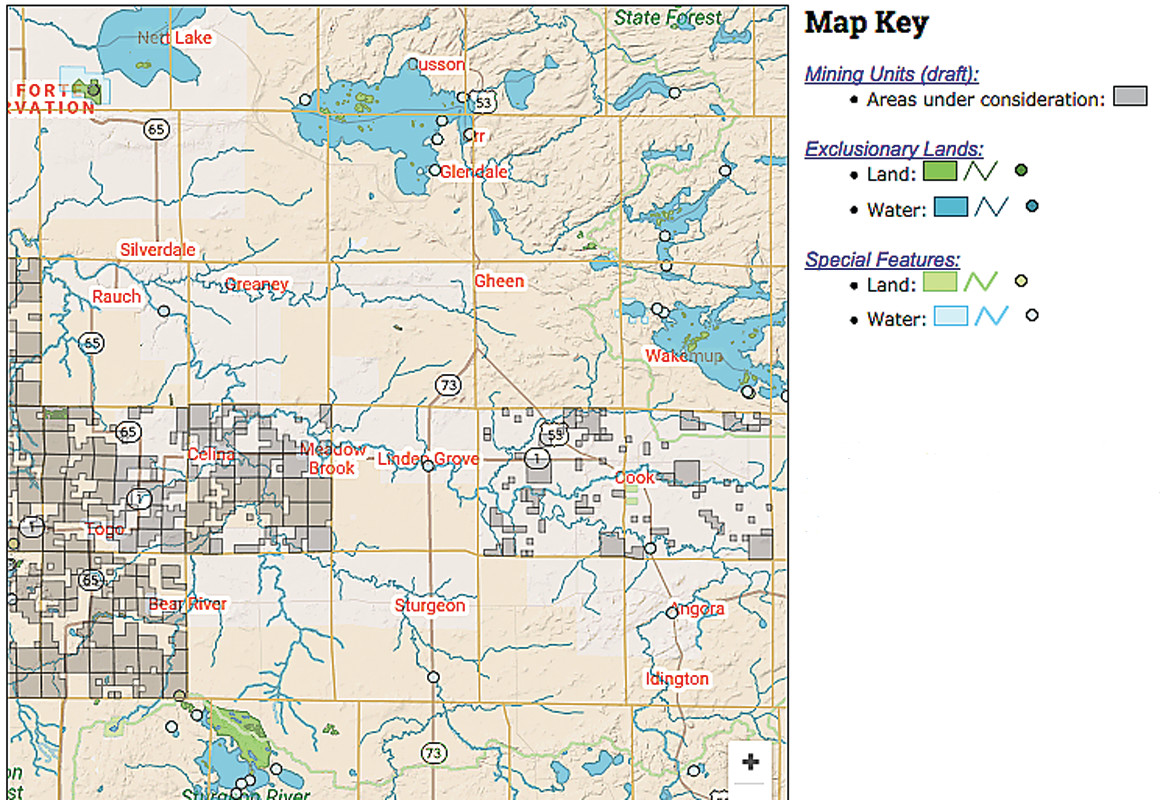Support the Timberjay by making a donation.
DNR taking input on planned mineral lease sale
Cook and Bear River areas among those under consideration
REGIONAL— The state’s Department of Natural Resources is currently considering offering mineral leases on nearly 200,000 acres of state lands in St. Louis, Itasca, and Koochiching counties, …
This item is available in full to subscribers.
Attention subscribers
To continue reading, you will need to either log in to your subscriber account, or purchase a new subscription.
If you are a current print subscriber, you can set up a free website account and connect your subscription to it by clicking here.
If you are a digital subscriber with an active, online-only subscription then you already have an account here. Just reset your password if you've not yet logged in to your account on this new site.
Otherwise, click here to view your options for subscribing.
Please log in to continue |
DNR taking input on planned mineral lease sale
Cook and Bear River areas among those under consideration
REGIONAL— The state’s Department of Natural Resources is currently considering offering mineral leases on nearly 200,000 acres of state lands in St. Louis, Itasca, and Koochiching counties, including thousands of acres in and around the city of Cook.
The DNR is currently seeking public input on the areas under consideration. Thousands of acres in Owens, Field, and Unorganized 62-21 in western St. Louis County are under consideration, along with tens of thousands of acres in adjacent portions of northeastern Itasca County. More details on the exact parcels under consideration and how to offer comments can be found on the DNR’s website at www.dnr.state.mn.us/lands_minerals/metallic_nf/leasing/lease_sale.html. The agency will be accepting comments through March 31. No date for the sale has been announced.
This will be the state’s 35th metallic minerals lease sale and the second using a new process designed to increase transparency, provide better access to information and afford an opportunity for public input. State officials adopted the new process following significant public outcry in northern Minnesota from surface owners affected by the mineral leasing program. In much of Minnesota, mineral rights are routinely severed from the surface rights, a situation that is uncommon in other parts of the country and isn’t well understood by many property owners in the region.
The lease sale involves nonferrous minerals, which are all metals except iron ore and taconite. Examples of nonferrous metallic minerals are: copper, nickel, platinum, palladium, gold, silver, cobalt, chromium, zinc, lead, bismuth, tin, tungsten, tantalum and niobium.
Under Minnesota law, the DNR is charged with managing state-owned minerals for exploration and development. Revenue generated from state metallic mineral leases benefits schools, the university, and local taxing districts. On average, the DNR holds a metallic mineral lease sale about every one to two years.
Following the receipt of bids, the state’s Executive Council, comprised of the governor, lieutenant governor, attorney general, secretary of state, and state auditor will make final decisions about whether to approve new state metallic minerals leases.
A lease does not automatically grant the leaseholder permission to mine. Before a state-owned parcel can be mined, the leaseholder must comply with all legal requirements for environmental review and permitting. Most state metallic minerals leases end within five years. Historically, about 2.2 percent of areas under state metallic minerals leases have one or more exploratory borings.






